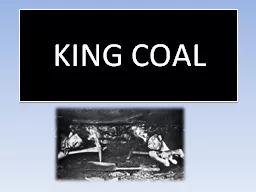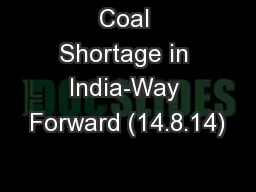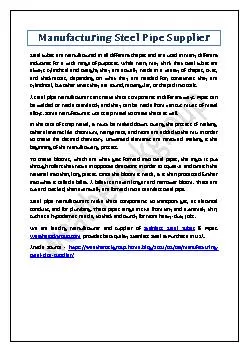PPT-Coking coal requirement for Indian Steel Industry and the prospects of its availability"
Author : giovanna-bartolotta | Published Date : 2019-11-20
Coking coal requirement for Indian Steel Industry and the prospects of its availability Indian Steel Markets Conference 2018 N C Jha Adviser Coal SAIL Presentation
Presentation Embed Code
Download Presentation
Download Presentation The PPT/PDF document "Coking coal requirement for Indian Steel..." is the property of its rightful owner. Permission is granted to download and print the materials on this website for personal, non-commercial use only, and to display it on your personal computer provided you do not modify the materials and that you retain all copyright notices contained in the materials. By downloading content from our website, you accept the terms of this agreement.
Coking coal requirement for Indian Steel Industry and the prospects of its availability": Transcript
Download Rules Of Document
"Coking coal requirement for Indian Steel Industry and the prospects of its availability""The content belongs to its owner. You may download and print it for personal use, without modification, and keep all copyright notices. By downloading, you agree to these terms.
Related Documents














